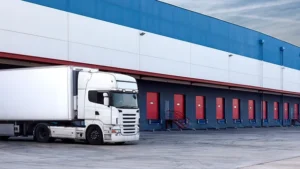
The Future of Logistics: Embracing Digital Innovations
In the dynamic world of logistics, digital innovations are reshaping traditional practices and setting new standards for efficiency and reliability. Key advancements such as digital delivery receipts, truck geolocation, driver geolocation, and driver performance monitoring are at the forefront of this transformation, offering unprecedented opportunities for optimization and enhanced service delivery.
Digital Delivery Receipts: Streamlining Operations with Efficiency
Gone are the days of paper-based delivery receipts. Digital delivery receipts have emerged as a cornerstone of modern logistics operations, revolutionizing how shipments are tracked and managed. By digitizing the receipt process through platforms like electronic signature systems and mobile apps, logistics companies can streamline documentation, reduce administrative overhead, and improve accuracy.
Digital delivery receipts provide real-time proof of delivery, enabling instant verification and enhancing customer satisfaction. This digital trail also facilitates seamless record-keeping and auditing, ensuring compliance and transparency throughout the logistics chain. For logistics providers, the adoption of digital delivery receipts translates into faster processing times, reduced errors, and greater operational efficiency.
Truck Geolocation: Enhancing Visibility and Control
Truck geolocation technology leverages GPS and advanced tracking systems to provide real-time location data of vehicles in transit. This capability allows logistics managers to monitor fleet movements with precision, ensuring adherence to planned routes and schedules. By tracking trucks on a digital map interface, logistics companies can optimize route planning, minimize idle time, and respond promptly to unforeseen disruptions.
Real-time truck geolocation enhances operational visibility and control, enabling proactive decision-making and efficient resource allocation. For example, managers can reroute vehicles to avoid traffic congestion or adjust delivery schedules based on current location data. This level of agility not only improves service reliability but also reduces operational costs and enhances overall fleet management effectiveness.
Driver Geolocation: Ensuring Safety and Compliance
Driver geolocation technology extends visibility beyond vehicles to individual drivers. Integrated with GPS and mobile devices, driver geolocation provides real-time tracking of drivers’ whereabouts during their shifts. This feature enhances safety measures by enabling quick response to emergencies and ensuring adherence to planned routes.
From a compliance standpoint, driver geolocation helps enforce regulatory requirements such as driving hours and rest periods. Logistics companies can monitor driver activities in real-time, ensuring adherence to legal and operational standards. Moreover, this technology promotes driver accountability and enhances operational transparency, contributing to safer driving practices and reduced operational risks.
Driver Performance Monitoring: Optimizing Efficiency and Effectiveness
Driver performance monitoring utilizes data analytics to track and assess key metrics such as driving behavior, fuel efficiency, and compliance with company policies. By analyzing performance data in real-time, logistics managers can identify trends, pinpoint areas for improvement, and implement targeted training programs to enhance driver efficiency and effectiveness.
Performance monitoring fosters a culture of continuous improvement and accountability within the workforce. Drivers are empowered to optimize their performance based on objective metrics, leading to reduced fuel consumption, minimized vehicle wear and tear, and improved overall operational efficiency. This data-driven approach not only enhances service quality but also supports sustainable business practices by reducing environmental impact and operational costs.
Conclusion
The integration of digital innovations such as digital delivery receipts, truck geolocation, driver geolocation, and driver performance monitoring represents a transformative shift in the logistics industry. These technologies empower logistics companies to optimize operations, improve service reliability, and meet evolving customer expectations. As logistics continue to evolve in complexity and scale, embracing these digital solutions will be crucial for staying competitive, driving innovation, and delivering exceptional value in the global marketplace.



